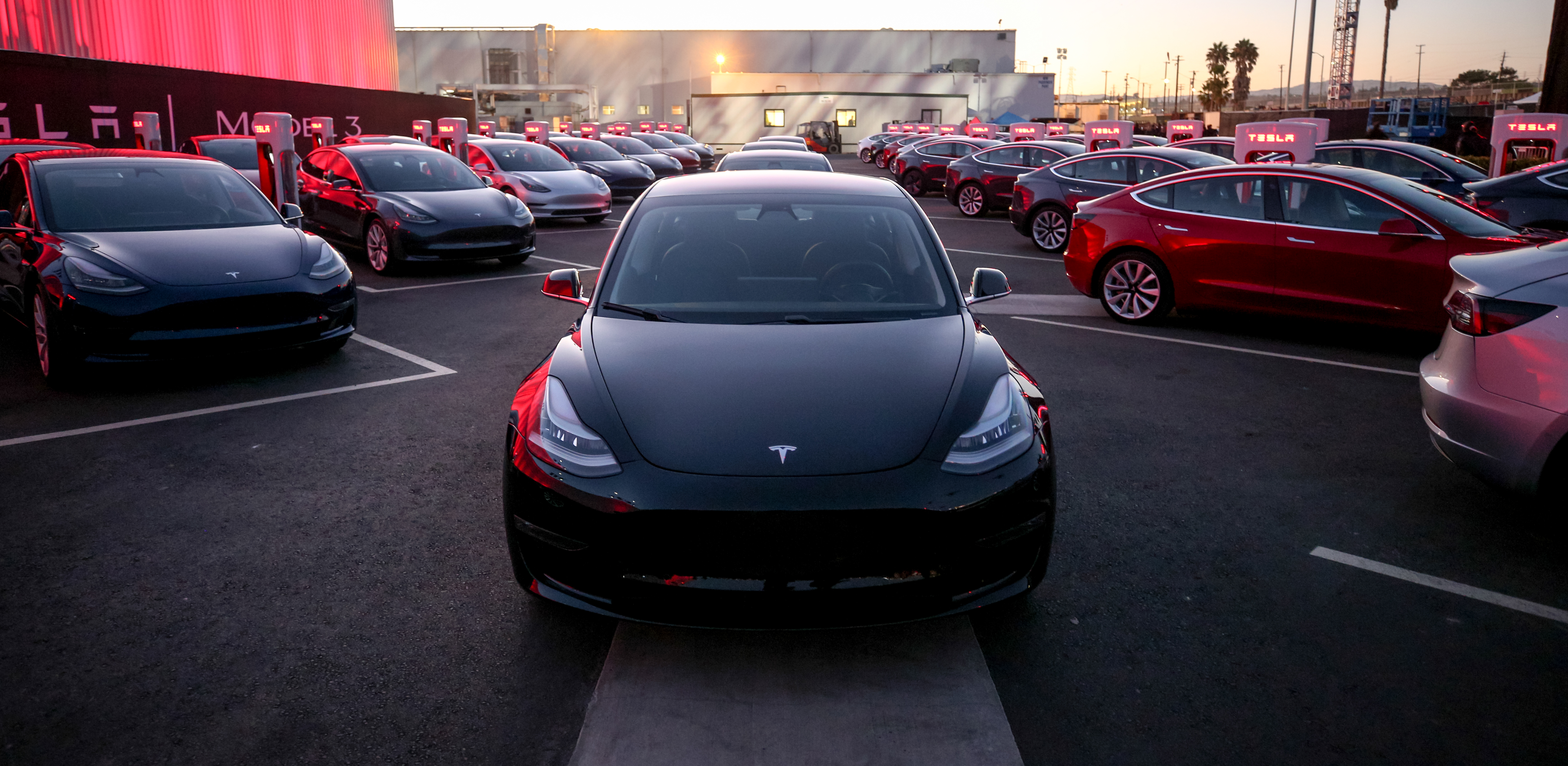The Break-Even Point
“A total vehicle output of 7,000 vehicles per week, or 350,000 per year, should enable Tesla to become sustainably profitable for the first time in our history”
My 2¢: Tesla is saying that their break-even point is below annual production of 350,000 units – 7000 cars per week.
Model 3 Production
“During the month of July, we have repeated weekly production of
approximately 5,000 Model 3 cars multiple times while also producing 2,000 Model S and X per week.”
2¢: Tesla says it has repeatedly hit 5,000 Model 3 weekly production which means that they are close but yet to average 5,000 every week. Model S and X have now nicely settled down at 2000 units per week.
Tesla now expects weekly production average to be around 5,000 Model 3s and 2000 Model S and X during the third quarter. If achieved, Tesla could be looking at production of nearly 80,000 to 90,000 units during the quarter. A massive step up from the 53,339 units Tesla built during the second quarter.
“We aim to increase production to 10,000 Model 3s per week as fast as we can.”
2¢: Tesla expects to reach this goal some time next year, not later this year as many of us expected. Tesla says that a majority of its production lines will be ready for production at this rate, but expects lower capacity in certain places and supply/supplier constraints.
Model S and Model X
“Demand for Model S and Model X vehicles remains high, with Q2 2018 being our highest ever Q2 for Model S and Model X orders.”
2¢: I was expecting Tesla to give enough color on Model S and Model X orders, mainly as a response to Needham Analyst Rajvindra Gill triggering a massive discussion around lackluster Model S and X sales as he downgraded Tesla stock to sell last month.
My own research showed clearly that except for China, Tesla Model S and X demand remained robust in all parts of the world.
According to Tesla, Model S and X orders were the highest ever in Q2-2018.
“While tariffs on vehicle imports to China have recently decreased to 15%, imports specifically from the US have increased to 40%. As a result, we had to adjust pricing in China in order to partially offset this increased cost. This will likely have some negative impact on our volumes in China in the near term. However, we do not expect our global vehicle deliveries to be heavily impacted since we will partially divert deliveries to North America and Europe if necessary. “
2¢: This makes it clear that Tesla expects sales in China to be hurt due to import tariff induced price increase. Tesla expects to offset sales decline in China by diverting deliveries to North America and Europe. With Tesla placing a cap on Model S and Model X deliveries for the year, which is nearly the same as they did last year, Tesla should be able to compensate its shortfall in China by tapping into other markets.
Gigafactory
“Tesla-owned Gigafactory 3 in Shanghai; Initial capacity is expected to be roughly 250,000 vehicles and battery packs per year, and will grow to 500,000, with the first cars expected to roll off the production line in about three years.”
“Initial investment will not start in any significant way until 2019, with much of it expected to be funded through local debt.”
“So with respect to Gigafactory CapEx, I think we learned a tremendous amount with Gigafactory 1, and we’re confident that we can do the Gigafactory in China for a lot less. I think it’s probably closer to – this is just a guess, but probably closer to $2 billion, and that should be at a higher – and that would be sort of at the 250,000 vehicle per year rate.”
2¢: One of the most discussed topic after Tesla’s second quarter earnings call was the unexpectedly low price tag of Gigafactory 3, $2 billion. But if you look at it closely you will realize that Elon is talking about an initial production capacity of 250,000 for Giga 3, which is half the capacity of Giga 1.
The $2 billion is for reaching a production rate of 250k units per year. Not 500k
Superchargers
“In Q2, we opened 103 new Supercharger locations for a total of 1,308 Supercharger stations and in late June celebrated our 10,000th Supercharger stall opening.”
2¢: Tesla’s aggressive spending cuts in the last few months made a lot of people speculate that the electric car maker might slowdown its supercharger expansion spree. But we are yet to see any evidence.
Capex:
“We have significantly cut back on our capex projections as a result of our revised strategy to grow capacity with our existing Model 3 lines rather than adding all new lines. Our total 2018 capex is expected to be slightly below $2.5 billion, which is significantly below the total 2017 level of $3.4 billion.”
“CapEx growing from 5,000 to 10,000 is a tiny fraction of the CapEx needed to grow from 0 to 5,000 Model 3s”, said Elon Musk during the Q2 earnings call.



